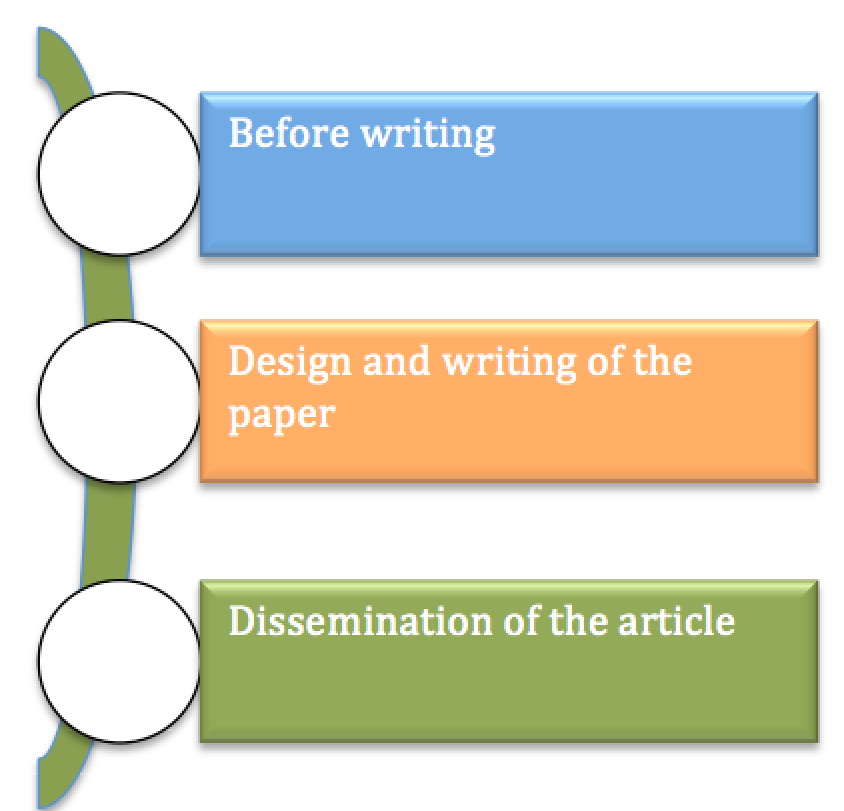Author: Rosa García-Ruiz – Translation: Erika-Lucia Gonzalez-Carrion
The writing of a scientific article implies an important effort for a researcher and academic, so it is essential to assume a holistic vision of the process to have guarantees of success and be able to publish it in the leading journal in the author’s research area.
 This publication process begins before beginning to write since it is necessary to carry out a process of analysis and reflection on the topic being worked on. At this time it is crucial to read to have a deep and detailed knowledge of the state of the matter, that is, the author needs to have an accurate map of the background to his contribution, what are the relevant issues, what have been the advances in recent years, what have the latest works published in the area of knowledge supposed, who are working on the same subject, how they carry out their contributions and what conclusions they have reached, etc. From the references collected, it is possible to design and state what the value of our article will be, accurately measuring what it will bring back to the status of the issue.
This publication process begins before beginning to write since it is necessary to carry out a process of analysis and reflection on the topic being worked on. At this time it is crucial to read to have a deep and detailed knowledge of the state of the matter, that is, the author needs to have an accurate map of the background to his contribution, what are the relevant issues, what have been the advances in recent years, what have the latest works published in the area of knowledge supposed, who are working on the same subject, how they carry out their contributions and what conclusions they have reached, etc. From the references collected, it is possible to design and state what the value of our article will be, accurately measuring what it will bring back to the status of the issue.
If during this process the pertinent bibliographic consultations have been made, this map will have been enriched with a series of referring scientific journals, among which the journal to which the article will be directed will be selected, paying special attention to the regulations for authors.
The next step is the writing of the manuscript. In previous posts of the School of Authors, reference has already been made to the guidelines to be followed in the writing of a scientific article, in its structure, regardless of its typology: literature review, research article, report, study or proposal, article which describes a new methodology or innovative method. In this sense, all articles require a striking, clear and concise title; an abstract and keywords that highlight the most relevant content and help the reader know what will be found in the text; an introduction or theoretical framework according to the objective or intention of the article and that demonstrates a deep knowledge of the subject and the status of the art; materials and methods that demonstrate an unquestionable scientific rigor; results obtained that delimit and put the value of the contributions of this new work; discussion and conclusions.
Before sending the article to the journal, we remember the need to carefully read the regulations, instructions on the submission process and pay attention to the checklist process. At the same time, and trying not to die in this laborious process, we insist on the convenience of getting the reading of a colleague, the so-called “peer friends“, to facilitate a critical and comprehensive reading of the article.
Finally, and no less important, if the author intends his/her article to be considered “a good article”, it is mandatory to contribute to the dissemination of the article, from the very publication of the preprint. Sharing the article published with other authors is the essence of the transfer of knowledge to society, for which the author has at his/her disposal social, scientific and common networks, portals specialized in scientific content, contact networks of experts in the field, institutional portals of universities, libraries or research centers. This dissemination process to achieve the greatest scientific impact of the article is precisely the one that brings substantial value to the hard work of publishing a good article without die trying. It is the commitment of each researcher, of each author, with his/her professional career and with his/her lines of research, sharing his/her articles with the community.
